New Products & Services
October 2018
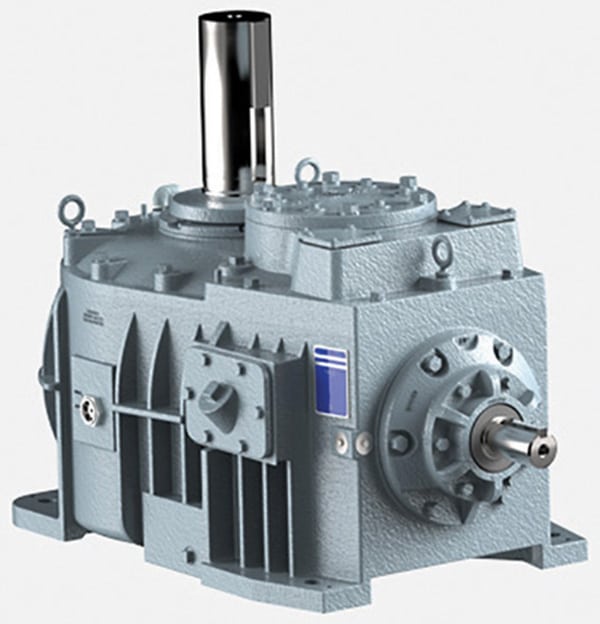
SPX Cooling Technologies
Series M Geareducers (photo) are designed and manufactured to directly replace other gearboxes in field-erected cooling towers. The Geareducer’s primary function is to reduce the speed of the electric motor to optimize fan performance by maximizing air movement through the cooling tower and minimizing maintenance requirements. It provides primary support to the fan, anchors it against lateral movement, withstands shock loads at startup and during speed changes, and minimizes power-transmission losses and noise generation. The M Series features gears of case-hardened alloy steel. To further extend service life, the Geareducer is fitted with large oil passageways to help maintain lower oil temperatures. The Geareducer operates without the need for oil pumps, oil filters or oil coolers. It runs with two-stage gear reduction for efficient power transmission, and the external cooling fins maximize surface area for cooler operation. — SPX Cooling Technologies, Inc., Overland Park, Kan.
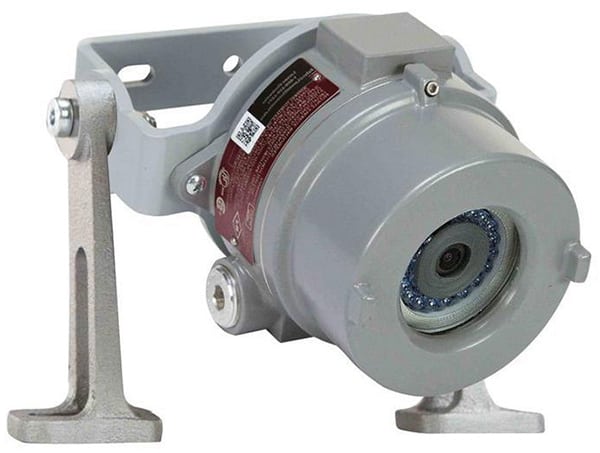
Larson Electronics
The EXPCMR-IP-POE-4MP-IR-SGM explosion-proof camera (photo) is a remote inspection device specifically designed for observation in hazardous locations. Operated remotely from a centralized control room, the camera’s image sensor is suitable for sight-glass applications and provides live feed from inside tanks, reactors and other vessels. This network camera features an 83-deg, wide-angle fixed lens and an integrated infrared LED array, providing low light and nighttime visibility up to 45 ft. Additionally, the remote inspection camera is built to withstand demanding conditions in explosive environments. For sight glass or surface mounting, the device can be attached directly using a nut, flanged adapter collar or hinged bracket. Bracket components allow robust, angled positioning of the light head. — Larson Electronics LLC, Kemp Tex.
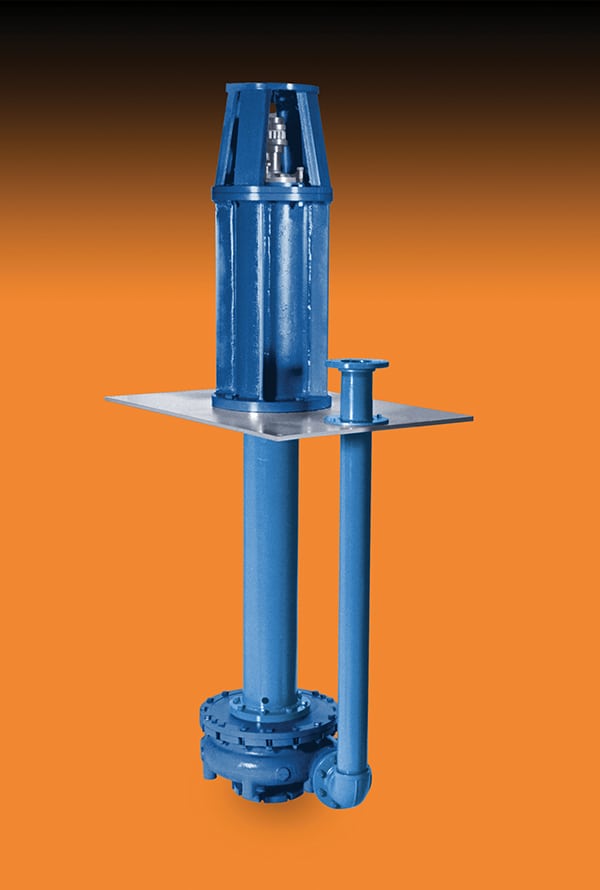
Vertiflo Pump
This company’s vertical wet-pit cantilever pump (photo) features a fully recessed impeller that is designed for solids pumping in light to medium slurries in many applications, including floating retention-pond pumping systems. Flows up to 1,600 gal/min and heads up to 170 ft are achievable for solids up to 4 in. in diameter. Pumps are available in lengths up to 6 ft with shaft diameters up to 5 in. Materials of construction include cast iron, 316 stainless steel, CD4, Alloy 20 and 28% chrome iron for various application requirements. — Vertiflo Pump Co., Cincinnati, Ohio
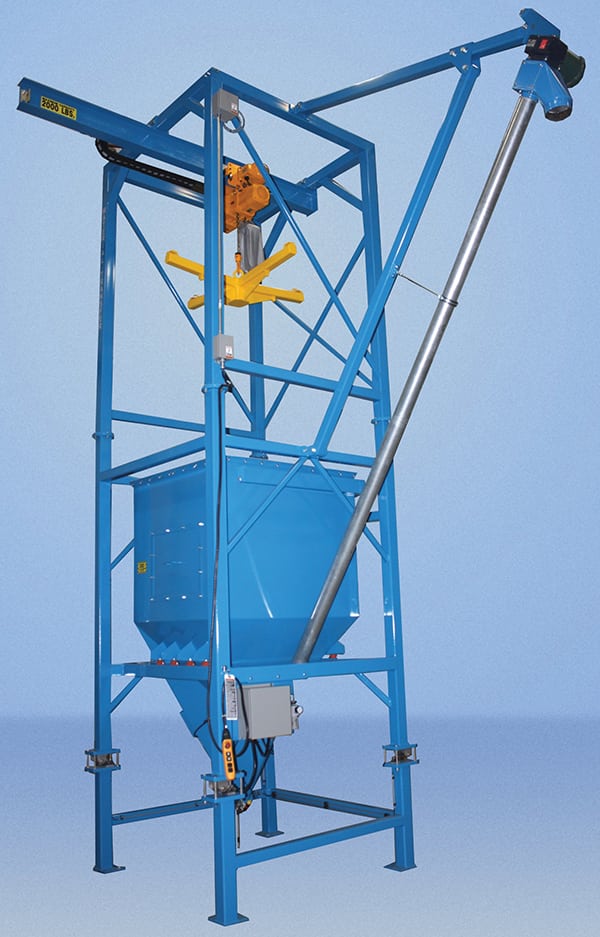
Material Transfer & Storage
The patented Material Master bulk-bag discharging system (photo) includes bag-piercing knives for the discharge of materials from bulk bags with or without an outlet spout. The system utilizes a two-ton chain hoist to lift the bulk bag into the carbon-steel discharge hopper where a static two-angle bag-piercing knife assembly empties bulk bags for a complete and efficient discharge of materials. For dust control, the hopper features a full-perimeter dust plenum with a dust takeoff stub. The system is also equipped with a rigid screw conveyor to transfer materials into users’ existing processes. A stainless-steel load-cell package provides loss-in-weight weighing capabilities. — Material Transfer & Storage Inc., Allegan, Mich.
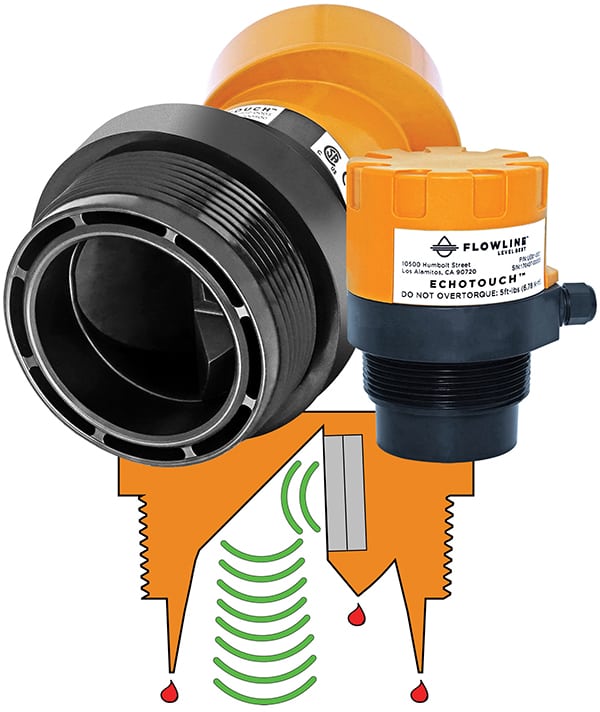
Flowline
Typically, the presence of condensation substantially degrades the measurement signal strength of ultrasonic sensors, but new EchoTouch reflective ultrasonic liquid-level sensors (photo) work in areas with condensation. By orienting the transducer vertically, condensation runs off the unimpeded transducer face to deliver reliable level measurement, says the manufacturer. EchoTouch reflective-ultrasonic level transmitters are offered in small and bulk-tank versions with optional pushbutton display or software configuration, as well as HART communication options. — Flowline, Inc., Los Alamitos, Calif.
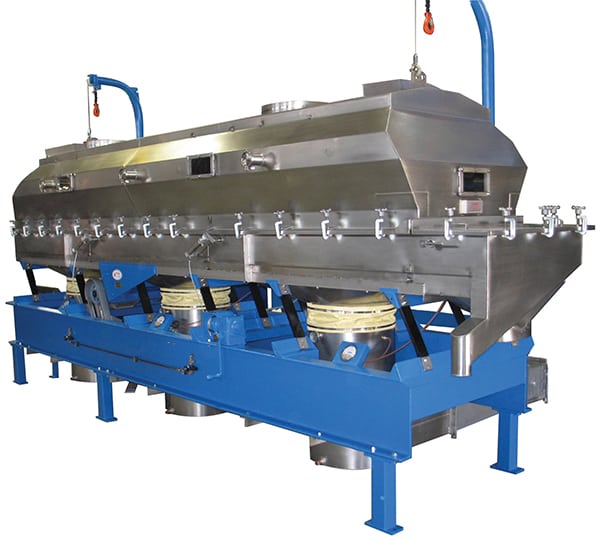
Witte
This company’s rugged fluid-bed dryers feature unitary steel bases as standard, which allow cover-lift hoists, process-air ductwork, control panels, monitoring instrumentation and other auxiliary equipment to be attached to the system as a single unit. Providing a dedicated, non-moving foundation, the bases ease process integration, add flexibility for installation and ensure that ancillary support systems may be installed on the same footprint, rather than set separately or left unspecified. Developed for use with vibrating fluidized-bed drying and cooling systems that process foods, chemicals, pharmaceuticals, minerals, plastics and other products, the support bases are carefully weighted to minimize vibratory reaction forces and to permit installation on mezzanines, light steel structures and on other above-grade locations. The bases may be fitted with secondary isolation elements to further reduce vibratory reaction forces and may be mounted on casters for mobility without affecting stability. — Witte Co., Washington, N.J.
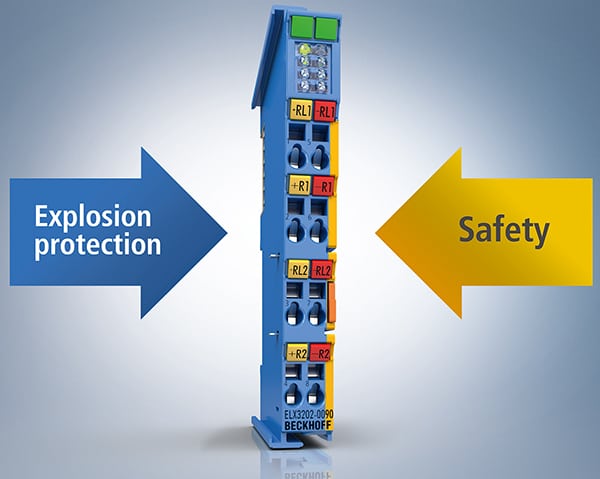
Beckhoff Automation
EtherCAT terminals (photo), part of this company’s ELX Series, have been expanded through the addition of analog input terminals with built-in TwinSAFE SC (single channel) technology. These highly compact I/O terminals can be used to support applications in hazardous areas that require both intrinsically safe signal transmission and functional safety capabilities. TwinSAFE SC technology enables the use of standard signals for safety-related tasks in any network or fieldbus system. The data from a TwinSAFE SC terminal are fed to the TwinSAFE Logic, where they undergo safety-related multi-channel processing. The data originating from different sources are analyzed, checked for plausibility and submitted to a “voting” process. The space-saving ELX Series terminals, which are certified to be in compliance with the specifications of the ATEX and IECEx standards, enable direct connection of intrinsically safe field devices through Zone 0/20 based on an integrated safety barrier. The new terminal designs now make it possible to achieve new safety levels, enabling users to harness all process data existing in a system for safety technology, such as to monitor the speed of fans in areas sensitive to explosion hazards, for example. — Beckhoff Automation LLC, Savage, Minn.
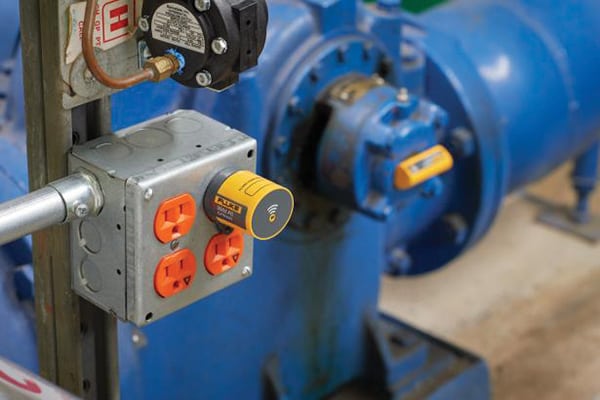
Fluke
The new 3561 FC vibration sensor (photo) improves uptime by adding remote, continuous vibration monitoring to virtually any rotating equipment. With a frequency range of 10 to 1,000 Hz, the 3561 FC detects and notifies users of conditional changes caused by critical faults, such as imbalance, misalignment, looseness and bearing wear, providing warning of impending equipment failure. The 3561 FC sensor is small enough to fit in hard-to-reach locations on equipment, and installation and setup are simple. The triaxial sensors deliver continuous measurements while the asset is in use, permitting maintenance technicians to remain at a safe distance, away from dangerous rotating equipment. — Fluke Corp., Everett, Wash.
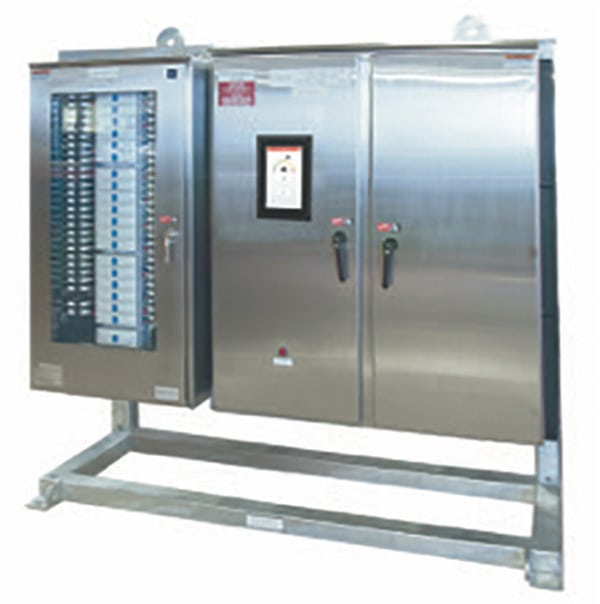
Thermon
The TraceNet Genesis control and monitoring system (photo) manages heat-trace circuit performance on process lines, tanks and instrumentation. The TraceNet Genesis system gives instant access to comprehensive heat-trace circuit information, including circuit performance history, fault analysis and circuit drawings. Using this information, maintenance personnel can predict failures or quickly restore operations, minimizing downtime. The TraceNet Genesis System provides instant on-panel access to heat-trace circuit performance trending and histories of up to six months for up to 72 heat-trace circuits. Until now, this capability was only available by networking back to a remote computer. A six-month history that reflects, for example, fluctuations or a steady decay in temperature could indicate that the system requires inspection to see whether the thermal insulation is being compromised or if an individual heater is not operating properly. By analyzing these data, engineers can assess the timing, process conditions and any undesirable symptoms as an early indicator of a future problem. — Thermon, San Marcos, Tex.
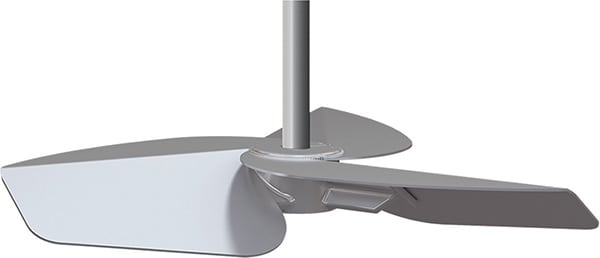
National Oilwell Varco
The Chemineer RL-3 impeller (photo) has been specifically engineered to prevent fibrous material buildup on the rotating impeller. This rag-shedding impeller also provides a strong axial flow for efficient blending and solids suspension. The design allows for a safer process and lower maintenance costs by eliminating frequent handling of the agitator by maintenance personnel, says the manufacturer. Fibrous material handling and disposal are also eliminated, improving solids suspension and blending uniformity in the basin. The loads on agitator system components, such as gears, bearings, motor, shaft and impeller blades, are significantly diminished. These features work together to not only reduce downtime, but eliminate manual process changes. Impeller sizes range from laboratory-scale to over 200 in. in diameter. Existing agitators can be quickly and easily retrofitted with the RL-3 impeller using simple hub-to-shaft connections. — National Oilwell Varco, Houston
 GT Strudl 2018 R1 software offers fully integrated and database-driven software for general finite element analysis (FEA) and comprehensive structural engineering design. The solution includes 10 functional areas that operate seamlessly with one another. This release includes new capabilities that allow the user to place, edit, split and copy physical members and display graphics and labels, apply loads, and set parameters for these members while maintaining mapping between other models from CADWorx Structure, Intergraph Smart 3D and more. In this latest release, the user can now automatically create standardized load combinations according to ASCE Standard ASCE/SEI 7-10 Section 1.4.1 and Steel Construction Manual AISC 14 th Ed. Part 1. — Hexagon PPM, Huntsville, Ala.
GT Strudl 2018 R1 software offers fully integrated and database-driven software for general finite element analysis (FEA) and comprehensive structural engineering design. The solution includes 10 functional areas that operate seamlessly with one another. This release includes new capabilities that allow the user to place, edit, split and copy physical members and display graphics and labels, apply loads, and set parameters for these members while maintaining mapping between other models from CADWorx Structure, Intergraph Smart 3D and more. In this latest release, the user can now automatically create standardized load combinations according to ASCE Standard ASCE/SEI 7-10 Section 1.4.1 and Steel Construction Manual AISC 14 th Ed. Part 1. — Hexagon PPM, Huntsville, Ala.
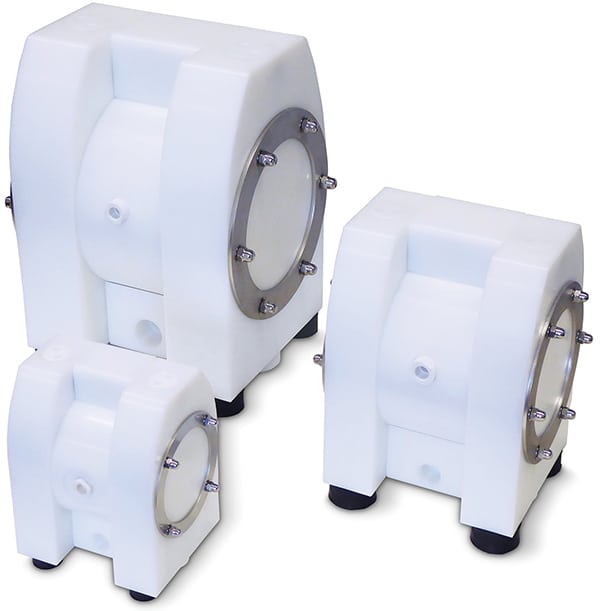
Almatec Maschinenbau
New C-Series air-operated double-diaphragm (AODD) pumps (photo) are designed to enable the housing parts to be tightened to each other via housing bolts. Rather than using single bolts that press against the housing, all of the C-Series’ bolts are tightened together against a diaphragm-sized ring on each side of the pump. This design distributes the forces of the housing bolts onto the housing parts evenly, providing a consistent flow of forces that increases bolt torque and improves pump safety. The design of C-Series pumps also ensures the suction and discharge ports are available as separate housing parts so that different connection versions are available for compatibility with existing installations. In addition, these pumps provide good suction head, and feature self-priming and dry-run capabilities. The C-Series also features no mechanical seals, drives or rotating parts that cause wear over time. C-Series pumps are available in three pump sizes and achieve flowrates ranging from from 1.3 to 7 m3/h at a maximum discharge pressure of 7 bars (100 psig). — Almatec Maschinenbau GmbH, Kamp-Lintfort, Germany
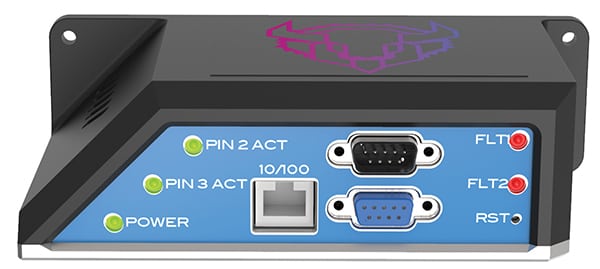
Cynash
SerialTap (photo) is a new cybersecurity solution for legacy industrial control networks that rely on serial communication protocols, such as RS-485 and RS-232. SerialTap consists of a patented sensing device that passively intercepts serial communications on legacy industrial control networks and complementary analytics software that identifies anomalous network traffic associated with cyberattacks. The SerialTap sensor is electrically isolated from the control network, preventing any possibility of interference. All intercepted serial data packets are sent to the analytics platform via an out-of-band Ethernet connection. — Cynash Inc., McLean, Va.
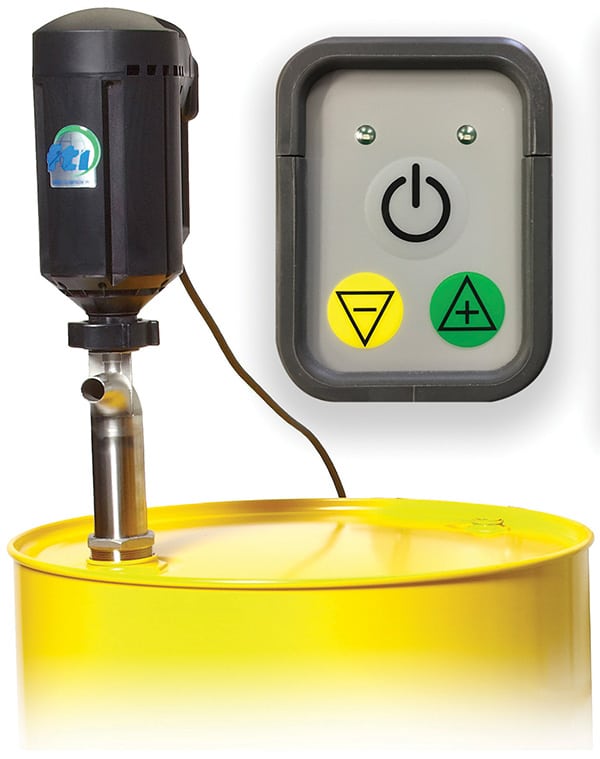
Michael Smith Engineers
This company’s Finish Thompson drum pumps and barrel-emptying pumps are now available with the TEFC (totally enclosed fan-cooled) IP55 motor (photo). The new motors include a powerful 1,000-W continuous-duty universal motor providing variable-speed operation from 0 to 12,000 rpm. The variable-speed TEFC versions feature solid-state control with a chemical-resistant touchpad for precise fluid dispensing and motor protection against overload and high temperatures. These motors provide 10 selectable speeds that can be easily adjusted by pushing the appropriate key on the keypad. These motors also incorporate a zero-voltage safety-release feature, which prevents the motor from turning back on after a power failure. — Michael Smith Engineers Ltd., Woking, U.K.
www.michael-smith-engineers.co.uk
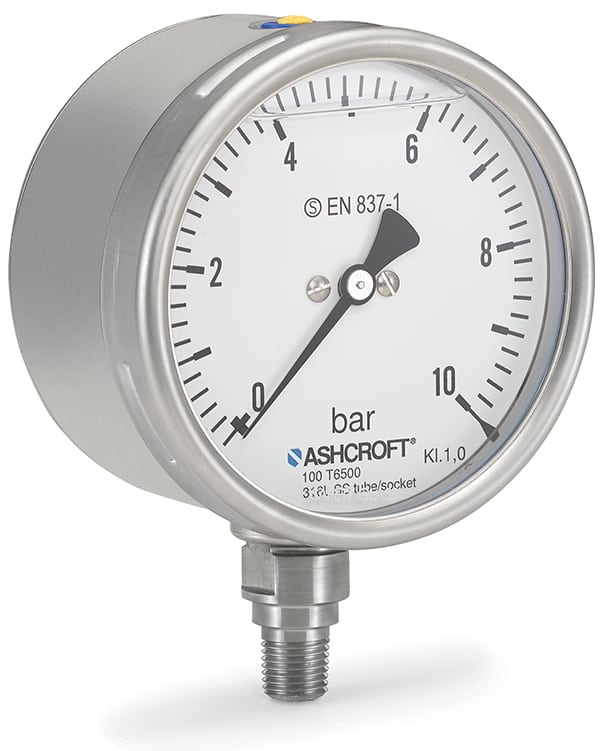
Ashcroft
The T6500 pressure gage (photo) is designed for use in environments with extremely low temperatures. The 100-mm solid-front stainless-steel pressure gage features several design considerations to optimize its configuration for extreme conditions. The XQC option includes a low-temperature-rated silicone fill material that prevents ice buildup inside the gage and remains liquid at temperatures down to –94°F (–70°C). Special fluorosilicone elastomer seals deter embrittlement in extreme cold to prevent leakage. The Plus Performance option for the T6500 dampens vibration, shock and pulsation effects. — Ashcroft Inc., Stratford, Conn.